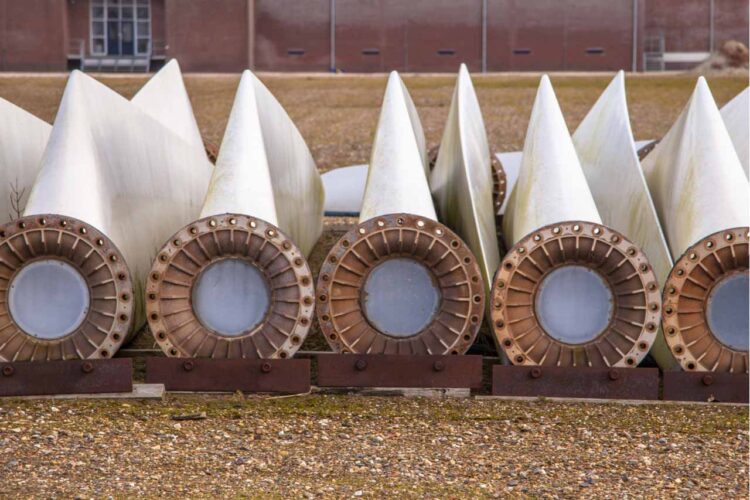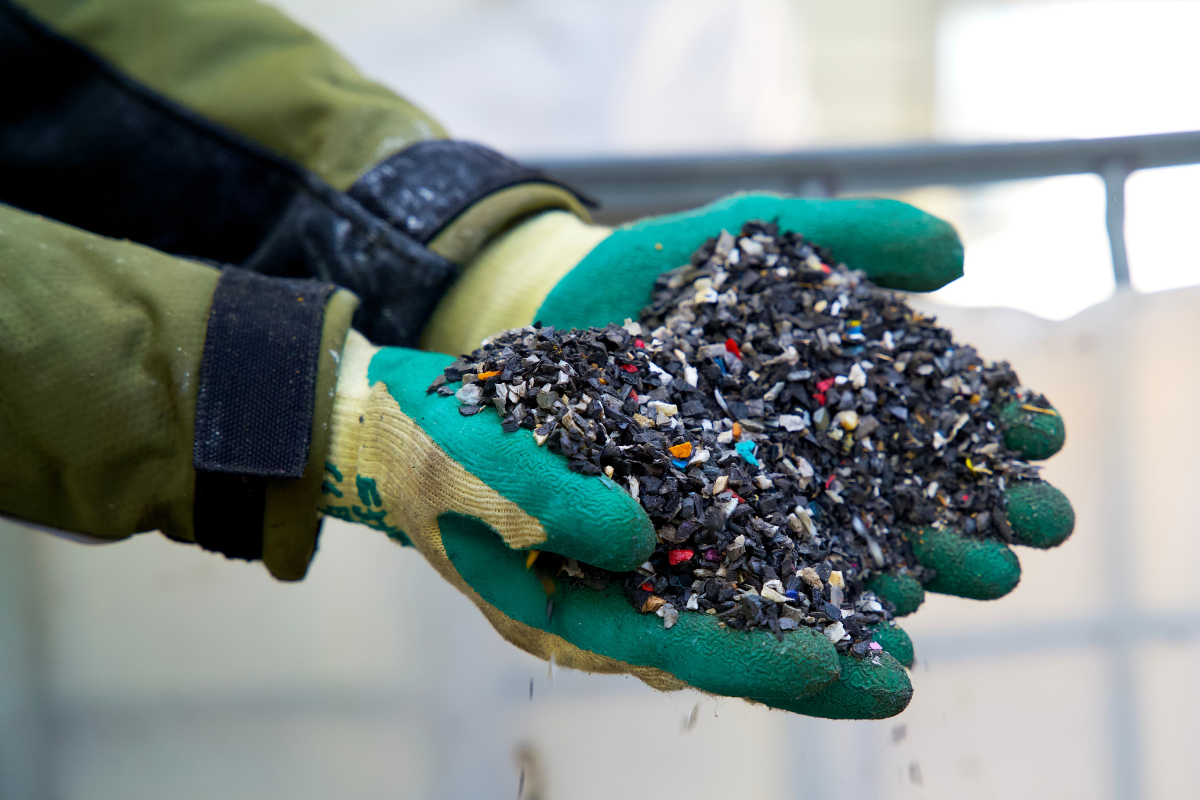As energy sourced from wind turbines grows, the issue of disposing of end-of-life blades also has increased in complexity and severity, spurring legal challenges and new technologies.
With a typical lifespan of about 20 years, blades will contribute more than 43 million metric tons to landfills by 2050, according to a 2017 paper published in ScienceDirect. The blades typically are made of fiberglass and resin, making them difficult to recycle. Several states have experienced dumping that created so-called turbine graveyards, including Wyoming, Iowa and South Dakota.
Wind power is the largest source of renewable energy in the U.S., generating nearly half of electricity produced, according to the World Economic Forum. Record-breaking installations of turbines in 2020 and 2021 increased U.S. wind energy generation by 30%. And though wind energy isn’t new – with some turbines dating back to the 1990s – the issue of proper disposal has moved to the forefront, with recycling companies accused of overpromising and under delivering.
One example came recently in Iowa, a state with its fair share of wind turbine recycling challenges and only a handful of options to move those materials. In late September, after years of complaints and little action, the Iowa attorney general filed suit against Global Fiberglass Solutions, a blade-recycling venture based in Washington state. In the suit, Iowa AG Brenna Bird alleges that Global Fiberglass Solutions violated state solid waste laws by dumping blades throughout Iowa.
The case is still pending, but Iowa wasn’t the first entity to sue GFS.
Following the development of massive capacity within about an hour’s drive, the Texas town of Sweetwater wound up as a dumping ground for old blades. As a result, industrial titan General Electric filed suit against GFS in September 2023, alleging a failure to follow through on recycling about 5,000 blades from farms in Texas and Iowa.
Little progress had been made to move the blades as of last May, and in early October, General Electric was granted a default judgment for more than $15 million in damages relating to breach of contract, plus $8 million in interest and fees, in the New York Southern District Court.
Sweetwater is located about 40 miles east of Abilene, where the terrain begins to shift from heavily developed urban areas into sparse desert – and offers plenty of wind. As of 2023, three of the world’s 10 largest wind farms were nearby, including the Roscoe Wind Project with 781.5 megawatts of installed capacity; Horse Hollow Wind Energy Center with 735.5 MW; and Capricorn Ridge Wind Farm with 662.5 MW.
A thousand miles north of Sweetwater, in the southeastern Minnesota town of Grand Meadow, several years of complaints about dumped turbine blades finally have culminated in official action.
In September the Minnesota Public Utilities Commission extracted a pledge from wind power developer NextEra Energy to move them. In early October, work had begun to move the blades and was expected to be finished by the end of the month, though their destination was unclear.
NextEra told the commission it would store them in Kansas or at a recycling company in Missouri, but a local news station reported they were headed to Iowa.
In 2020, NextEra switched out blades at a nearby wind farm as part of an upgrade project. In 2022, a startup recycling contractor known as Canvus pledged to convert used blades into benches. However, the company dumped the blades in the town and eventually folded.
New wind projects continue to develop at a feverish pace, both onshore and off. As of September, the Biden administration has approved 10 new offshore projects for a total annual capacity of more than 15 gigawatts – enough to power almost 4 million homes. In addition, the U.S. Bureau of Ocean Energy Management holds periodic offshore wind energy lease sales for still more capacity.
Onshore, the U.S. has nearly 75,000 turbines in 45 states plus the territories of Guam and Puerto Rico, according to the U.S. Wind Turbine Database. The top five states in wind energy generation by volume are Texas, Iowa, Oklahoma, Kansas and Illinois, by the U.S. Energy Information Administration’s count. Offshore wind energy capacity also is expected to increase significantly in the next few years.
New recycling technologies bloom
In Fairfax, Iowa, Regen Fiber has developed a recycling process in which shredded blades are processed and used to reinforce concrete and asphalt. The company also has a Des Moines plant that recycles new-blade scrap and a blade processing plant in Lubbock, Texas, which provides strategic access to the area.
While mechanical recycling of blades trundles along, other circular processes are being developed, including compostable and biomass-sourced blades.
In August, a group of researchers from the U.S. Department of Energy’s National Renewable Energy Laboratory announced they had developed a new plant-based polyester for use in turbine blades. At the end of its useful life, the material can be recycled via what the researchers described as a “mild” chemical process of heating in methanol.
The process broke down a 9-meter blade in about six hours, according to an NREL press release. “Nine meters is a scale that we were able to demonstrate all of the same manufacturing processes that would be used at the 60-, 80-, 100-meter blade scale,” said co-author Robynne Murray in the press release.
At the University of California, Davis, polymer composites researchers are working on blades made from bamboo and mycelium, a rootlike system that produces mushrooms.
In Europe, a four-year EU-funded research project with partners from seven countries, and coordinated by Spanish plastics technology institute Aimplas, aims to develop chemical recycling techniques for turbine blades.
In the Rewind project, Aimplas will develop pyrolysis and solvent-based recycling methods to recover monomers, which will then be used to make new epoxy, polyester and vitrimer resins, according to a press release. Vitrimer consists of resins similar to thermoset plastics, and is used to improve moisture barriers and increase mechanical strength.
Rewind participants include six research and technology centers, two universities, four subject matter experts, three large companies and one association from throughout Europe.























